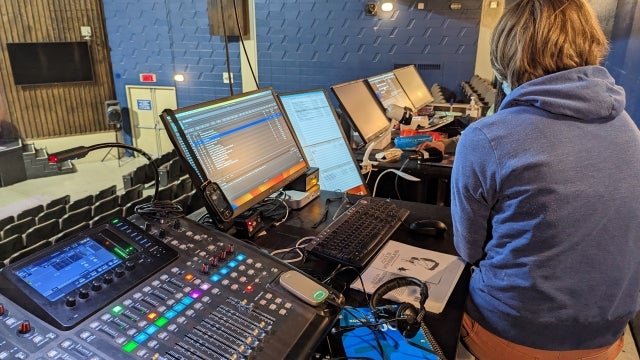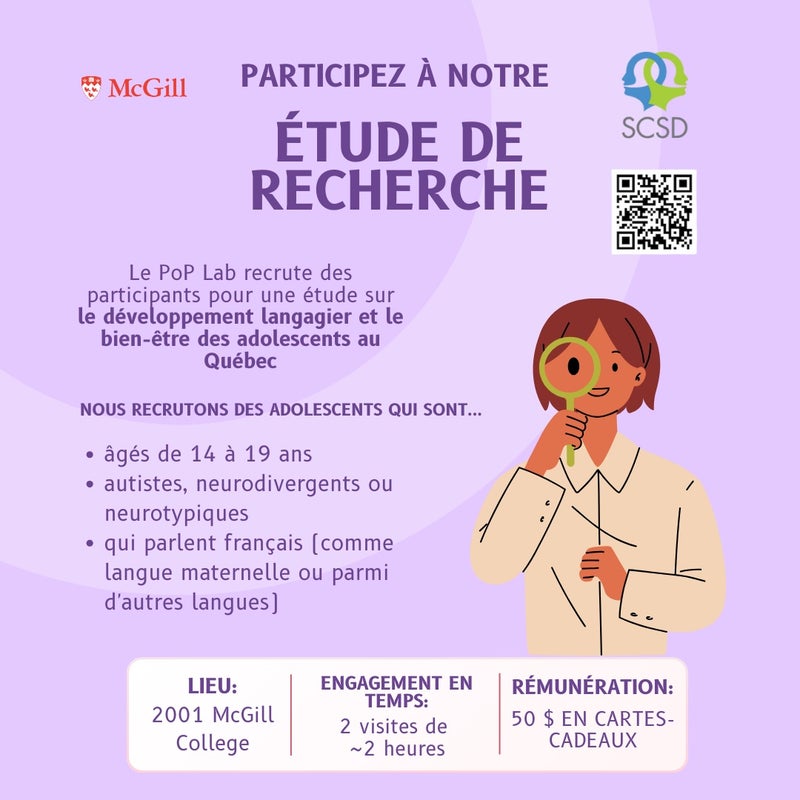Increasing access to sound at John Rennie

By Chris Webb and Tracey Green
Fewer things are taken for granted than one's ability to use their senses to experience the world. For those requiring assistive listening devices, whether to treat a known hearing loss, or simply to overcome difficulties listening at a distance or in noise, the luxury of “hearing” and “listening” cannot be presumed. After a conversation with a student with hearing loss, who highlighted the poor acoustics in the 1960-era Louise Chalmers Theatre at John Rennie High School of the Lester B. Pearson School Board (LBPSB), increasing access to sound in the space became a priority.
To solve our theatre problem, we started working with the school’s Actor’s Studio program, Kurt Binnie and Michael Papoulias (Information Services at LBPSB), Dany Lasablonnière (Oreille Bionique), Tracey Green, our Itinerant Educational Specialist (IES) from the Montreal Oral School for the Deaf (MOSD), Jenny Alvarado and Stephanie Joly-Houde (MOSD audiologists) and talking to end users (those using assistive listening devices).
It was quickly determined that a WiFi-based system would best meet the needs of universal accessibility (as opposed to T-coil or FM-based systems traditionally used in concert venues). The system from Listen Technologies that we agreed on allows the user to connect to the audio via their phone over WiFi and stream directly to their listening devices or a pair of headphones. This means that anyone in the theatre who wishes to use assistive listening can access what is being said on the stage with increased ease, enjoy the sound effects, listen to music being performed, as well as participate in a presentation. The introduction of this technology has led us to push for the consistent use of microphones during assemblies and meetings (instead of teachers projecting their voices), leading to a much more optimal access. In addition, we have also started to caption our live events using a custom built Google Chrome Extension, which leverages the use of inbuilt captioning in Google Slides.
Putting technology in place to break down barriers is an important step to improving access to information, but it does not solve everything for those living with varying degrees of deafness. Listening requires a great deal of effort, especially for the members of our school community with hearing loss. They are supported with services provided by a comprehensive team from the MOSD including the IES and audiologists. As the students make their way through their school careers, they work with their IES on auditory training and self-determination/advocacy skills to be able to access the classroom curriculum and school life.
Auditory training is a must when using listening technology as the brain is a muscle and requires constant exercise to keep itself sharp. During a recent staging of Alice in Wonderland, headsets were used to enhance communication between the crew, including the sound designer who had hearing loss. Situation-focused auditory training in this new environment allowed the student with hearing loss to feel more competent and contribute in a meaningful way. It reminds us all that we can do anything we put our minds to!
Find out more about what we’ve been up to on our blog at http://www.listeningaccessability.ca.
Chris Webb is a math teacher at John Rennie High School. Tracey Green is a teacher of the deaf/Montreal Oral School for the Deaf Itinerant Educational Specialist.









